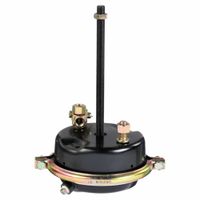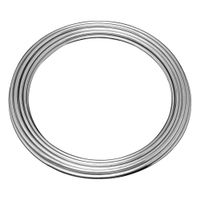Call +(254) 703 030 000 / 751 483 999 / 721 704 777
- Home
- Fleet Vehicle Maintenance
- Tire Brake Maintenance
- Brake Service
Brake Service
Brake service products support the repair and maintenance of braking systems. Air brake maintenance products support the repair of compressed air braking systems that are primarily used by trucks hauling heavy loads. Hydraulic brake maintenance products support the repair of brake systems that rely .....Read More
Frequently Asked Questions
What are the signs that my brakes need servicing?
Signs that your brakes need servicing include:
1. **Squeaking or Squealing Noises**: High-pitched noises when applying brakes often indicate worn brake pads.
2. **Grinding Sound**: A grinding noise suggests that the brake pads are completely worn out, and the metal components are rubbing against each other.
3. **Vibration or Pulsation**: If you feel vibrations or pulsations in the brake pedal, it could be due to warped rotors.
4. **Longer Stopping Distances**: If your vehicle takes longer to stop than usual, it may indicate worn brake pads or other brake system issues.
5. **Brake Warning Light**: An illuminated brake warning light on your dashboard can signal a problem with the brake system.
6. **Spongy or Soft Brake Pedal**: A brake pedal that feels spongy or sinks to the floor may indicate air in the brake lines or a problem with the master cylinder.
7. **Pulling to One Side**: If your car pulls to one side when braking, it could be due to uneven brake pad wear or a problem with the brake caliper.
8. **Burning Smell**: A sharp, chemical odor after repeated hard braking can indicate overheated brakes or a stuck caliper.
9. **Visible Wear**: Inspecting the brake pads through the wheel spokes can reveal if they are less than a quarter-inch thick, indicating the need for replacement.
10. **Leaking Fluid**: Puddles of brake fluid under your vehicle can indicate a leak in the brake system, which requires immediate attention.
Regular brake inspections and maintenance are crucial for safety. If you notice any of these signs, it’s important to have your brakes checked by a professional mechanic promptly.
How often should I replace my brake pads?
Brake pads should generally be replaced every 30,000 to 70,000 miles, but this range can vary based on several factors. Driving habits play a significant role; aggressive braking or frequent stop-and-go traffic can wear out brake pads faster. The type of brake pads also matters; organic pads wear out quicker than semi-metallic or ceramic ones. Vehicle type and weight influence wear as well; heavier vehicles or those used for towing may require more frequent replacements. Regular maintenance checks are crucial; listen for squealing or grinding noises, which indicate worn pads. Always consult your vehicle’s manual and a trusted mechanic for specific guidance.
What is the difference between air brakes and hydraulic brakes?
Air brakes and hydraulic brakes are two distinct systems used to slow down or stop vehicles, each with unique mechanisms and applications.
Air Brakes:
1. **Mechanism**: Air brakes use compressed air to apply pressure to the brake pads or shoes. When the brake pedal is pressed, air is released from storage tanks into the brake lines, activating the brakes.
2. **Components**: Key components include an air compressor, storage tanks, brake chambers, and valves.
3. **Applications**: Commonly used in heavy vehicles like trucks, buses, and trains due to their ability to handle high loads and provide consistent braking force.
4. **Advantages**: Air brakes are reliable and can be used in vehicles with multiple trailers. They have a fail-safe mechanism; if the system loses pressure, the brakes automatically engage.
5. **Maintenance**: Requires regular checks for air leaks and moisture in the system, which can affect performance.
Hydraulic Brakes:
1. **Mechanism**: Hydraulic brakes use brake fluid to transfer force from the brake pedal to the brake pads or shoes. Pressing the pedal increases fluid pressure in the brake lines, causing the brakes to engage.
2. **Components**: Key components include a master cylinder, brake lines, calipers, and brake fluid.
3. **Applications**: Typically used in passenger cars and light trucks due to their efficiency and responsiveness.
4. **Advantages**: Hydraulic brakes provide smooth and precise braking. They are generally easier to maintain and repair compared to air brakes.
5. **Maintenance**: Requires regular checks of brake fluid levels and condition, as well as inspection for leaks in the system.
In summary, air brakes are preferred for heavy-duty applications due to their robustness and safety features, while hydraulic brakes are favored for lighter vehicles due to their efficiency and ease of maintenance.
How do I know if my brake rotors need to be replaced?
1. **Vibrations or Pulsations**: If you feel vibrations or pulsations in the brake pedal or steering wheel when braking, it may indicate warped rotors.
2. **Squealing or Squeaking Noises**: High-pitched noises when braking can suggest that the rotors are worn or uneven.
3. **Grinding Sounds**: A grinding noise usually means the brake pads are worn down, and the metal is contacting the rotor, which can damage it.
4. **Visual Inspection**: Look for visible signs of wear such as grooves, scoring, or rust on the rotor surface. Excessive wear or deep grooves indicate replacement is needed.
5. **Thickness**: Measure the rotor thickness with a micrometer. If it's below the manufacturer's minimum specification, replacement is necessary.
6. **Blue Discoloration**: Overheating can cause rotors to turn blue, indicating they may be compromised and need replacing.
7. **Increased Stopping Distances**: If your vehicle takes longer to stop, it could be due to worn rotors.
8. **Dashboard Warning Light**: Some vehicles have sensors that trigger a warning light if the rotors are worn.
9. **Brake Pedal Feel**: A soft or spongy brake pedal can indicate rotor issues.
10. **Mileage and Age**: Rotors generally last between 30,000 to 70,000 miles. If you're within this range and experiencing issues, consider replacement.
11. **Professional Inspection**: A mechanic can provide a thorough inspection and recommend if replacement is necessary.
What are the best brake pads for heavy-duty trucks?
The best brake pads for heavy-duty trucks are those that offer superior stopping power, durability, and heat resistance. Here are some top options:
1. **Ceramic Brake Pads**: Known for their longevity and quiet operation, ceramic brake pads are ideal for heavy-duty trucks that require consistent performance. They produce less dust and are less abrasive on rotors, which can extend the life of the braking system.
2. **Semi-Metallic Brake Pads**: These pads are composed of metal fibers and other materials, providing excellent heat dissipation and durability. They are well-suited for heavy-duty applications due to their ability to handle high temperatures and provide strong braking force.
3. **Low-Metallic NAO Brake Pads**: These pads contain a small amount of metal, offering a balance between ceramic and semi-metallic pads. They provide good heat transfer and braking performance, making them suitable for trucks that carry heavy loads.
4. **Carbon Fiber Brake Pads**: Known for their high performance, carbon fiber brake pads offer exceptional stopping power and heat resistance. They are often used in performance vehicles and heavy-duty trucks that require reliable braking under extreme conditions.
5. **Organic Brake Pads**: Made from non-metallic materials, organic pads are quieter and softer, which can be beneficial for trucks that prioritize comfort. However, they may wear out faster under heavy loads compared to other types.
When selecting brake pads for heavy-duty trucks, consider factors such as load capacity, driving conditions, and maintenance requirements. Brands like Wagner, Bosch, and Akebono are renowned for producing high-quality brake pads suitable for heavy-duty applications. Always ensure compatibility with your truck's braking system and consult with a professional if needed.
How can I tell if there is a problem with my air brake system?
To determine if there is a problem with your air brake system, look for the following signs:
1. **Warning Lights and Alarms**: Check for any dashboard warning lights or audible alarms indicating low air pressure or other issues.
2. **Air Pressure Gauge**: Monitor the air pressure gauge. Normal operating pressure is typically between 100-125 psi. If the pressure drops below this range, there may be a leak or compressor issue.
3. **Air Leaks**: Listen for hissing sounds that indicate air leaks. Use soapy water to check connections and hoses for bubbles, which reveal leaks.
4. **Brake Response**: Notice any delay or unevenness in brake response. This could indicate issues with the brake chambers or valves.
5. **Brake Pedal Feel**: Pay attention to the brake pedal. A spongy or hard pedal can signal problems with the air supply or brake components.
6. **Brake Lag**: Observe any lag between pressing the brake pedal and the vehicle slowing down. This could be due to air supply issues or faulty components.
7. **Excessive Moisture**: Check for excessive moisture in the air tanks, which can cause corrosion and freezing. Drain the tanks regularly to prevent this.
8. **Brake Noise**: Listen for unusual noises such as grinding or squealing, which can indicate worn brake pads or other mechanical issues.
9. **Brake Adjustment**: Ensure brakes are properly adjusted. Misadjusted brakes can lead to uneven wear and reduced braking efficiency.
10. **Visual Inspection**: Regularly inspect hoses, lines, and connections for wear, damage, or corrosion.
If you notice any of these signs, it is crucial to have your air brake system inspected and repaired by a qualified technician to ensure safety and compliance with regulations.
What maintenance is required for hydraulic brake systems?
Maintenance of hydraulic brake systems involves several key tasks to ensure optimal performance and safety:
1. **Regular Inspection**: Check the brake fluid level regularly. Low fluid levels can indicate leaks or worn brake pads. Inspect the brake lines, hoses, and connections for any signs of wear, corrosion, or leaks.
2. **Brake Fluid Replacement**: Brake fluid absorbs moisture over time, which can lead to corrosion and reduced braking efficiency. It is recommended to replace the brake fluid every 1-2 years or as specified by the vehicle manufacturer.
3. **Brake Pad and Rotor Inspection**: Regularly inspect brake pads for wear. Replace them if they are below the minimum thickness specified by the manufacturer. Check rotors for warping, scoring, or excessive wear and replace or resurface them as needed.
4. **Bleeding the Brakes**: Air in the brake lines can cause a spongy brake pedal feel and reduce braking efficiency. Bleed the brakes to remove any trapped air, ensuring a firm and responsive brake pedal.
5. **Caliper Maintenance**: Inspect brake calipers for proper operation. Ensure that the caliper pistons move freely and that the caliper slides are lubricated to prevent sticking.
6. **Check for Unusual Noises**: Listen for any unusual noises such as squealing or grinding, which can indicate worn brake pads or other issues that need attention.
7. **Test Brake Performance**: Regularly test the brakes for responsiveness and stopping power. Any decrease in performance should be addressed immediately.
8. **Environmental Considerations**: Keep the brake components clean and free from dirt, dust, and debris, which can affect performance.
By adhering to these maintenance practices, the hydraulic brake system will remain reliable and effective, ensuring safety and longevity.

